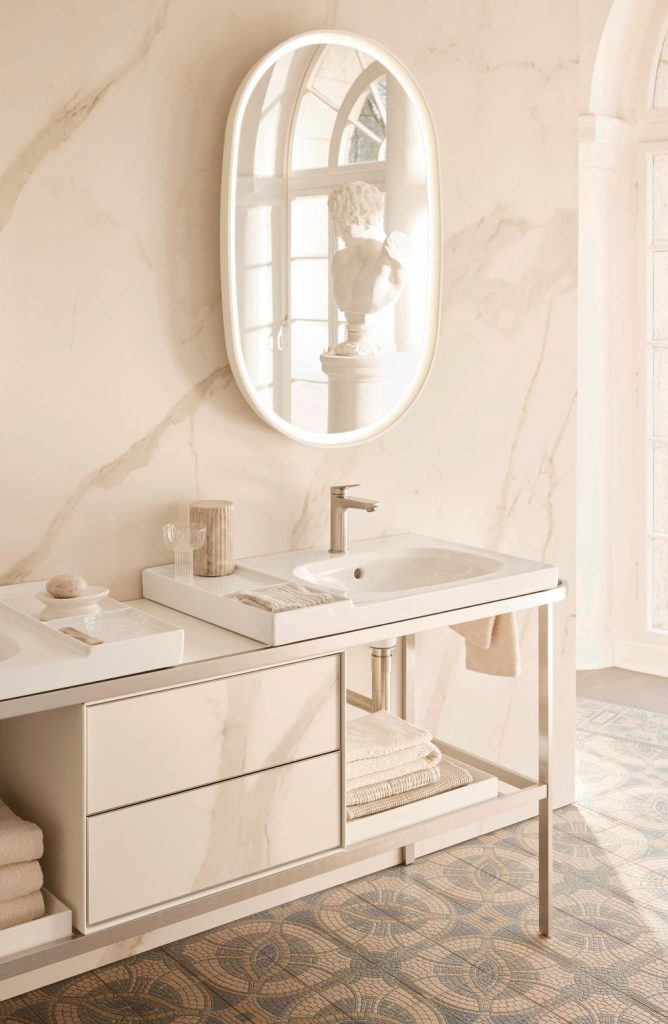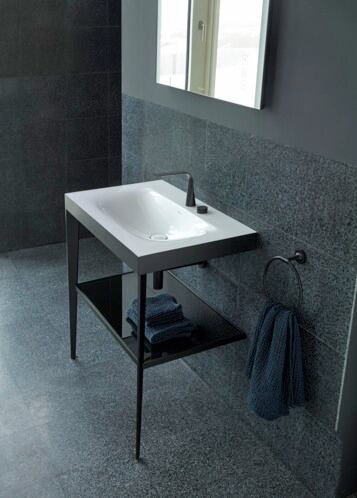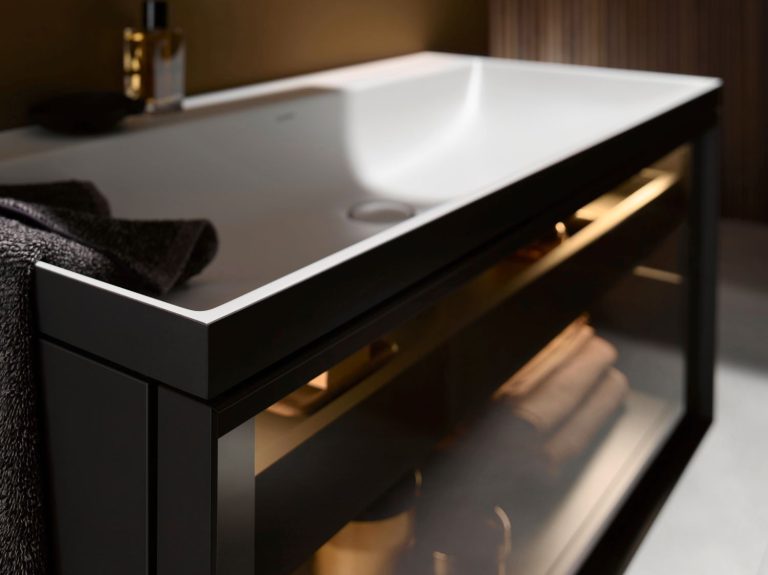Duravit explores how materials can impact design. Whether selecting velvety cast-mineral materials or distinctive natural patterns, designers can raise the bar for bathroom design.
Intriguing textures, the best materials, and bespoke surfaces can create a personalised atmosphere highlighting individual design styles. A harmonious mix of materials can be achieved by comparing the different effects of the various elements used and how they interact.
Glass: lightness and transparency
Glass conveys a feeling of spaciousness and freedom and helps to create an elegant and airy atmosphere in any room. The Vitrium bathroom, designed by Christian Werner (pictured top), skillfully places this effect centre stage: the smoke-coloured glass fronts lend the furniture a light, almost floating appearance. Conversely, the black textured glass fronts combined with the wooden carcass on Sebastian Herkner’s Zencha range imbue the bathroom with a sophisticated elegance.
This makes glass a true all-rounder, which is especially effective when combined with other materials.
Natural stone: pure beauty
Choosing natural stone brings an element of nature into the bathroom. Natural stone conveys unique qualities with its individual colour nuances, textures, and patterns. A distinctive stone panel in three different tones brings a natural, timeless constancy to the Qatego designer bathroom range by Studio F. A. Porsche.

Metal: a variety of interpretations
Metal’s currency in the furniture sector is partly due to its versatility. With a range of different variants, the material can provide an extra-special look in any bathroom. For instance, a minimalistic piece of metal furniture can create a futuristic and pared-down impression or a gentle and softer effect can be produced when combined with wood.
The Viu/XViu model perfectly exemplifies how a sleek metal frame can mix with a delicately worked ceramic basin to create a washbasin with sculptural style. In turn, the Aurena bathroom range blends Italian elegance with a touch of modern industrial style by combining the metal frame either with ceramic panels for a marbled look or embossed ebony to create a highly elegant ambience.


Wood: cosy warmth
Surfaces with a wooden aesthetic imbue the interior design with warmth more than virtually any other raw material. Décor surfaces with a wooden texture make rooms homely and comfortable, creating a calming and relaxed atmosphere. Their natural colour palette makes them a perfect match for other surfaces, always fitting in while remaining unobtrusive. Above all, combining a wooden vanity unit and a ceramic or cast-mineral washbasin creates a sense of timeless elegance.
Ceramic: undisputed bathroom classic
Robust, durable, and easy-to-clean ceramic is practical and looks great. The innovative material DuraCeram® enables washbasins with extremely thin walls and precise dimensions to be manufactured without affecting quality and durability. A case in point is the washbasins of the Luv range, featuring clear contours and edges. They can be interpreted in various ways: sometimes elegant, sometimes minimalistic, but always unique and a design statement.
Cast mineral: tactile newcomer
There are many reasons why washbasins and bathtubs made from cast mineral are becoming increasingly popular. The unique feature of DuroCast, the cast-mineral material developed by Duravit, is the velvety matt
surface that looks elegant, and allows extremely precise shapes to be crafted.
DuroCast feels extraordinary to the touch and brings a warm yet elegant atmosphere into the bathroom, it can be perfectly combined with other materials such as wood and glass.

